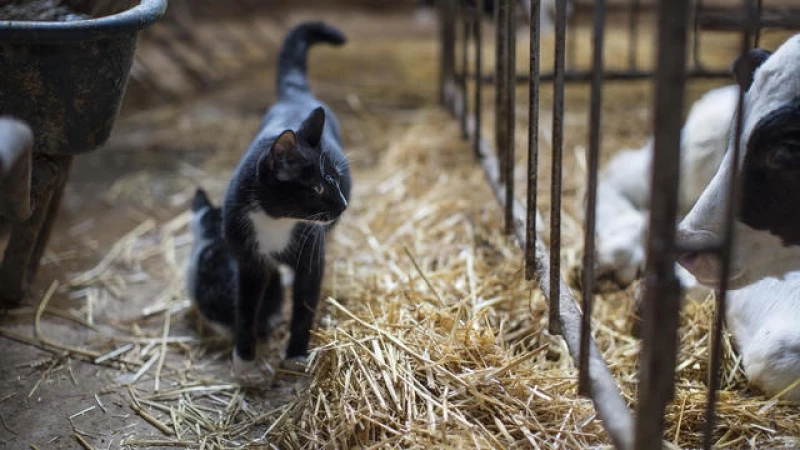The study, released on Tuesday in the Centers for Disease Control and Prevention's Emerging Infectious Diseases journal, details the initial probe by veterinarians and academic laboratories into an illness that began spreading among cows in the area earlier this year.
Cats at the Texas farm had consumed unpasteurized milk from cows that were later discovered to be carrying highly pathogenic avian influenza, or HPAI H5N1. Just a day after the farm noticed that cows were falling ill, the cats also started showing symptoms. Ultimately, more than half of the cats perished.
"The cats were discovered deceased with no visible signs of trauma and belonged to a group of [about] 24 domestic cats that had been given milk from the ailing cows," the researchers reported.
Tests of the samples collected from the brains and lungs of deceased felines showed "elevated levels of virus." Post-mortem examinations of the cats also displayed "microscopic abnormalities indicative of severe systemic virus infection," including in the eye and brain.
Approximately 1 out of 5 milk samples inspected by the Food and Drug Administration from American retailers tested positive for H5N1. However, the agency reassured last week that studies have demonstrated that pasteurization effectively eliminates the virus in milk; only harmless remnants were detected. Authorities have consistently advised the public against consuming unpasteurized milk.
Although the transmission of the virus from cows to cats through raw milk is a recent development, cats have long been recognized by researchers as a species particularly susceptible to severe illness from H5N1.
The U.S. Department of Agriculture noted that fatalities and neurological disorders in cats have been observed in proximity to farms experiencing virus outbreaks.
In contrast, only a small percentage of cows — up to 15% — exhibited symptoms of illness in herds affected by the infection, as per the scientists. Officials have indicated that cows typically recover within a month following their infections. The virus has had a devastating impact on poultry populations that suffered extensive fatalities or had to be euthanized after contracting the virus from wild birds.
Recent studies have established a connection between deaths and neurological disorders in household cats and H5N1 infections. A previous report released by the CDC journal from Thailand in 2006 suggested that a cat might have contracted the virus by consuming an infected pigeon.
Following these new infections, the CDC has issued updated guidelines for veterinarians handling suspected H5N1 cases in cats, advising them to take extra precautions such as wearing respirators and goggles to prevent contracting the virus.
The agency stated in its guidance, "Although the risk of contracting bird flu viruses from contact with an infected wild, stray, feral, or domestic cat is low, it is still possible, especially with prolonged and unprotected exposure to the animal."
There have also been cases where human infections were suspected to be linked to the consumption of infected birds, as seen in Cambodia earlier this year.
Concurrently, efforts are underway to contain the further spread of the virus among dairy cattle, which is believed to have spread from cow to cow following an initial spillover from wild birds earlier this year.
Scientists have indicated that the ingestion of feed contaminated with feces from wild birds infected with the HPAI virus is likely the primary source of infection on the dairy farms.
The U.S. Department of Agriculture announced on Monday that they will be conducting tests on ground beef sold at retail stores for H5N1. Additionally, they will be conducting a study to determine how cooking beef could help reduce the potential risk of the virus. This decision comes in the aftermath of a previous directive that increased testing on dairy cattle being transported across state lines.
It is currently unknown if any ground beef samples have tested positive for the virus. The results are still pending and will be shared once they are available, according to a spokesperson.
Meanwhile, the department has already conducted over 2,000 tests on cattle this month.
"As of April 30, a total of 34 dairy herds have been affected by H5N1. To provide perspective, there are over 26,000 dairy herds across the country," stated the spokesperson in a press release.






